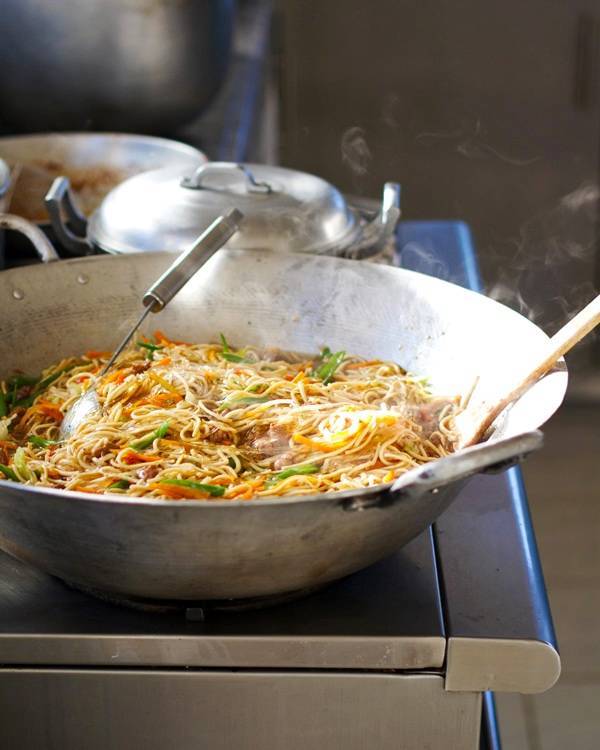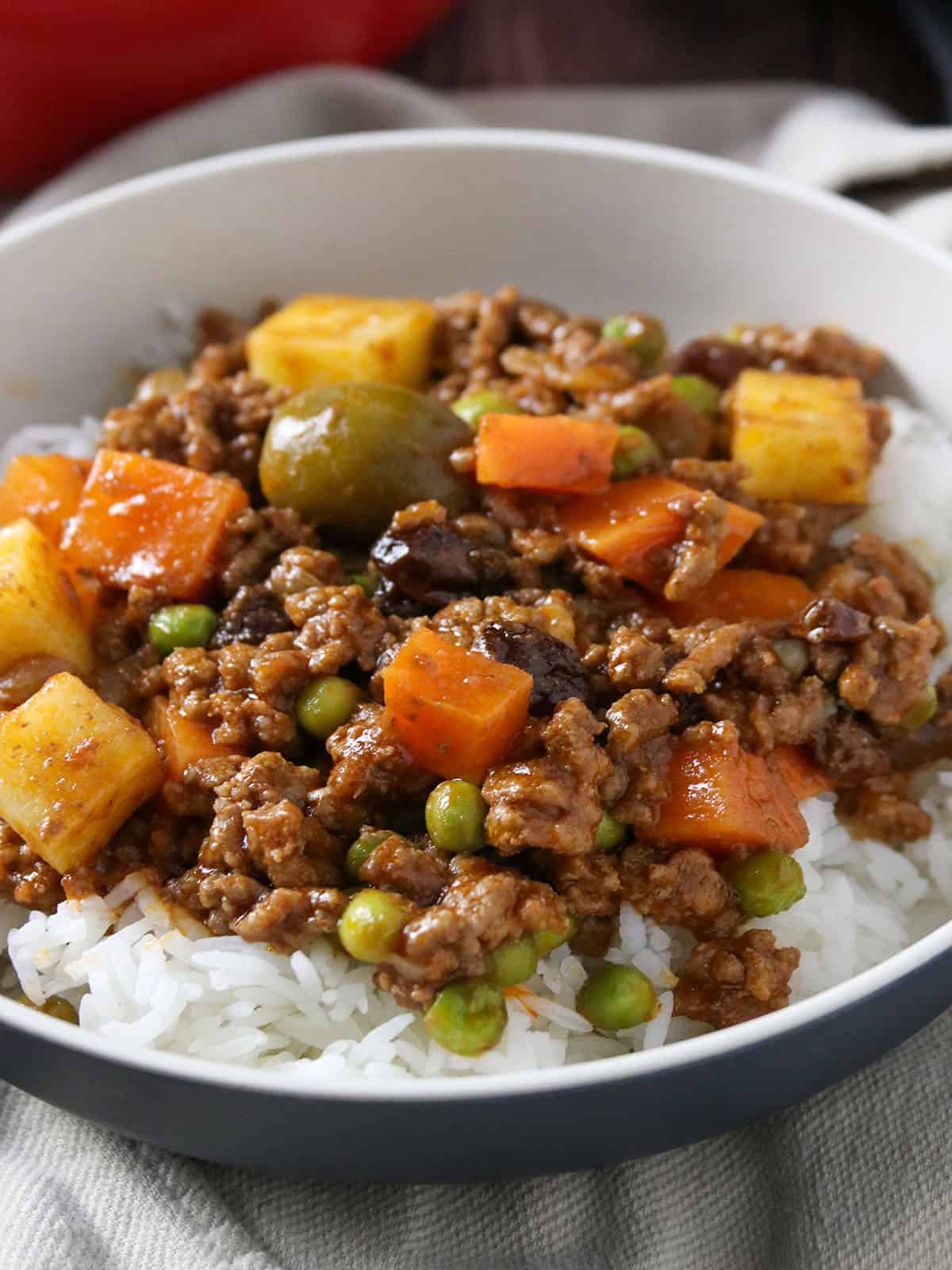Genuine Filipino Food Recipes to Try at Home
Checking out authentic Filipino food dishes offers a possibility to value the elaborate flavors and social importance behind each dish. From the well-loved Adobo, with its savory sauce, to the zesty Sinigang that personifies the significance of Filipino convenience, these recipes welcome a much deeper understanding of standard cooking techniques. Utilizing fresh, local components is vital, as is welcoming public dining-- a characteristic of Filipino society. As we consider the essential components and techniques that specify these cooking treasures, one may question what specific dishes can genuinely record the heart of this vibrant food.
Popular Filipino Dishes
Filipino cuisine boasts an abundant tapestry of tastes and practices, with over a dozen legendary recipes that highlight the country's diverse cultural impacts. One of the most well-known meals is Adobo, a tasty stew usually made with poultry or pork, seasoned in vinegar, soy sauce, garlic, and spices. Its tangy taste account makes it a staple in Filipino households.
Another precious meal is Sinigang, a sour soup typically made with tamarind, tomatoes, and different veggies. This meal can include pork, shrimp, or fish, and its refreshing preference is perfect for warm environments. For those with a craving for sweets, Leche Flan-- a velvety sugar custard-- acts as a preferred dessert, showcasing the Filipino fondness for rich, pleasant tastes.
Kare-Kare, a passionate oxtail stew with a thick peanut sauce, together with the famous lumpia, or springtime rolls, better exemplify the range discovered in Filipino food. Each dish not only offers special preferences however additionally narrates of regional components and historical impacts, making Filipino food a dynamic representation of its culture and heritage.
Vital Active Ingredients for Filipino Food Preparation
The essence of Filipino food preparation depends on its vital ingredients, which work as the foundation for the country's cherished meals. A selection of tastes and appearances integrated, showcasing the diverse social influences that form Filipino food.
Trick ingredients consist of rice, the staple that accompanies almost every dish, signifying nutrition and area. Soy sauce, vinegar, and fish sauce (patis) are vital for spices, conveying umami and deepness to recipes. Fresh natural herbs like cilantro and basil add fragrant quality, while garlic, onion, and ginger offer a durable taste base.
Healthy protein resources such as pork, hen, and fish and shellfish are main to numerous dishes, commonly seasoned to improve preference. Vegetables like eggplant, bitter melon, and green beans add essential nutrients and equilibrium - Filipino food recipes. Coconut milk is one more significant active ingredient, offering creaminess and a subtle sweet taste to different stews and desserts
Last but not least, calamansi, a citrus fruit, offers a revitalizing tang that raises meals and beverages alike. With each other, these components create the lively and rich tapestry of tastes that define Filipino food, making it both reassuring and distinctive. Comprehending these basics is vital for anybody wanting to replicate genuine Filipino recipes at home.
Step-by-Step Recipe Overview

Start by preparing your ingredients. For Adobo, slice the meat into uniform items and season it in soy sauce, vinegar, garlic, and bay leaves for a minimum of thirty minutes. Next off, heat oil in a pan and sauté the garlic and onions until great smelling, then add the marinated meat, permitting it to brownish equally.
For Sinigang, begin by steaming water in a pot and adding your selection of meat. Once tender, include tamarind paste or fresh tamarind for that trademark sour flavor. Adhere to with veggies like radish and kangkong, cooking up until just tender.

Tips for Authentic Taste
Usually, attaining authentic taste in Filipino dishes rests on the mindful selection and therapy of active ingredients. Start with fresh, high-grade fruit and vegetables, as the vibrancy of vegetables and natural herbs significantly boosts the meal's general taste. Staples like garlic, onions, and ginger create the fragrant foundation for many dishes; using them in appropriate proportions is essential.
Selecting the ideal protein is just as vital. As an example, conventional adobo typically utilizes chicken or pork, seasoned to take in the marinade's complete taste. In addition, think about sourcing in your area created or local ingredients, as they can provide authenticity that store-bought options lack.
Food preparation strategies likewise play a crucial function. Slow-cooking techniques, such as braising or stewing, permit tastes to blend beautifully, while frying can add a gratifying structure. Do not overlook spices; using salt, fish sauce, or soy sauce at the appropriate moments can boost a recipe significantly.
Offering and Appreciating Filipino Food
Culinary experiences are enhanced when Filipino food is offered with focus to custom and community. The practice of click for info sharing meals is main to Filipino society, representing unity and friendliness. When offering Filipino dishes, think about utilizing traditional serveware, such as clay pots or bamboo baskets, which enhance the credibility of the experience.
Typically, Filipino meals are enjoyed family-style, with a selection of dishes placed at the facility of the table. This communal method urges interaction and allows visitors to example different flavors. A well-curated spread could consist of staples like adobo, sinigang, and lumpia, enhanced by rice, which is a basic component of every meal.
Coming with the food with typical dressings, such as soy sauce, vinegar, or chili paste, can raise the dining experience, welcoming diners to tailor their plates to their choices. Furthermore, incorporating neighborhood beverages, like calamansi juice or tuba, can improve the overall taste profile.
Conclusion
